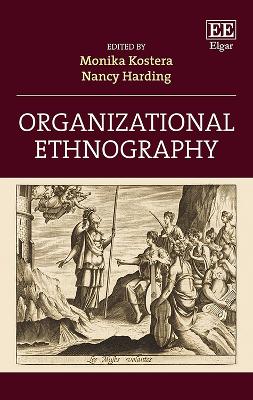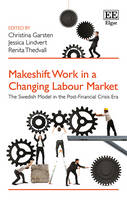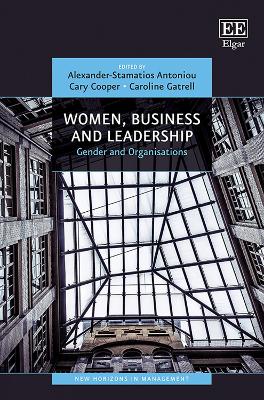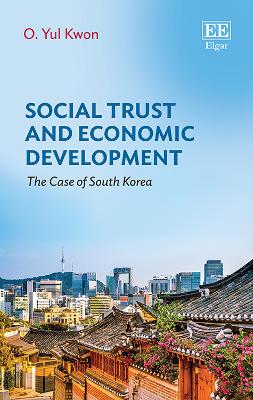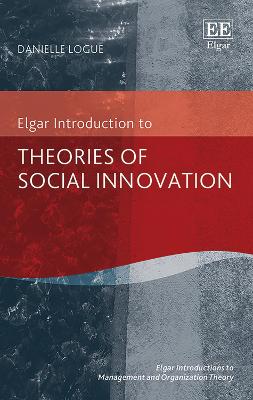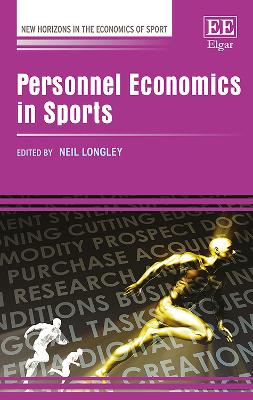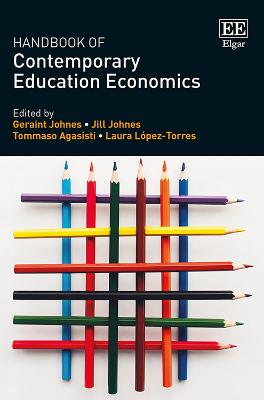Learning in Labour Markets
 -10%
portes grátis
-10%
portes grátis
Learning in Labour Markets
Waldman, Michael
Edward Elgar Publishing Ltd
03/2017
992
Dura
Inglês
9781786431226
15 a 20 dias
Introduction Michael Waldman
PART I CLASSICS
1. Michael Spence (1973), 'Job Market Signaling', 87 (3), Quarterly Journal of Economics, August, 355-74
2. Boyan Jovanovic (1979), 'Job Matching and the Theory of Turnover', Journal of Political Economy, 87 (5), Part 1, October, 972-90
3. Eugene F. Fama (1980), 'Agency Problems and the Theory of the Firm', Journal of Political Economy, 88 (2), April, 288-307
4. Michael Waldman (1984), 'Job Assignments, Signaling and Efficiency', Rand Journal of Economics, 15 (2), Summer, 255-67
5. Bruce C. Greenwald (1986), 'Adverse Selection in the Labour Market', Review of Economic Studies, 53 (3), July, 325-47
6. Bengt Holmstrom (1999), 'Managerial Incentive Problems: A Dynamic Perspective', Review of Economic Studies, 66 (1), January, 169-82
PART II EDUCATION
7. John G. Riley (1979), 'Testing the Educational Screening Hypothesis,' Journal of Political Economy, 87 (5), Part 2: Education and Income, October, S227-S252
8. Kevin Lang and David Kropp (1986), 'Human Capital Versus Sorting: The Effects of Compulsory Attendance Laws', Quarterly Journal of Economics, 101 (3), August, 609-24
9. Thomas Hungerford and Gary Solon (1987), 'Sheepskin Effects in the Returns to Education', Review of Economics and Statistics, 69 (1), February, 175-7
10. Kelly Bedard (2001),'Human Capital versus Signaling Models: University Access and High School Dropouts', Journal of Political Economy, 109 (4), 749-75
11. Fabian Lange (2007), 'The Speed of Employer Learning', Journal of Labor Economics, 25 (1), 1-35
12. Peter Arcidiacono, Patrick Bayer and Aurel Hizmo (2010), 'Beyond Signaling and Human Capital: Education and the Revelation of Ability,' American Economic Journal: Applied Economics, 2 (4), October, 76-104
PART III THEORY OF SYMMETRIC LEARNING
13. Milton Harris and Bengt Holmstrom (1982), 'A Theory of Wage Dynamics', Review of Economic Studies, 49 (3), July, 315-33
14. Robert Gibbons and Michael Waldman (1999), 'A Theory of Wage and Promotion Dynamics Inside Firms', Quarterly Journal of Economics, 114 (4), November, 1321-358
15. Jaime Ortega (2001), 'Job Rotation as a Learning Mechanism', Management Science, 47 (10), October, 1361-70
16. Edward P. Lazear (2004), 'The Peter Principle: A Theory of Decline', Journal of Political Economy, 112 (1) Part 2, S141-S163
PART IV EVIDENCE ON SYMMETRIC LEARNING
17. Robert Gibbons and Kevin J. Murphy (1992), 'Optimal Incentive Contracts in the Presence of Career Concerns: Theory and Evidence', Journal of Political Economy, 100 (3), June, 468-505
18. Curtis J. Simon and John T. Warner (1992), 'Matchmaker, Matchmaker: The Effect of Old Boy Networks on Job Match Quality, Earnings and Tenure', Journal of Labor Economics, 10 (3), July, 306-30
19. Henry S. Farber and Robert Gibbons (1996), 'Learning and Wage Dynamics', Quarterly Journal of Economics, 111 (4), November, 1007-47
20. Joseph G. Altonji and Charles R. Pierret (2001), 'Employer Learning and Statistical Discrimination', Quarterly Journal of Economics, 116 (1), February, 313-50
21. Lisa B. Kahn and Fabian Lange (2014) 'Employer Learning, Productivity, and the Earnings Distribution: Evidence from Performance Measures', Review of Economic Studies, 81, 1575-613
22. Amanda Pallais (2014), 'Inefficient Hiring in Entry-Level Labor Markets', American Economic Review, 104 (11), 3565-99
23. Jeanine Miklos-Thal and Hannes Ullrich (2016), 'Career Prospects and Effort Incentives: Evidence from Professional Soccer', Management Science, 62 (6), 1645-67
PART V THEORY OF ASYMMETRIC LEARNING
24. Paul Milgrom and Sharon Oster (1987), 'Job Discrimination, Market Forces, and the Invisibility Hypothesis', Quarterly Journal of Economics, CII (3), August, 453-76
25. James D. Montgomery (1991), 'Social Networks and Labor-Market Outcomes: Toward an Economic Analysis', American Economic Review, 81, (5), December, 1408-418
26. Dan Bernhardt (1995) 'Strategic Promotion and Compensation', Review of Economic Studies, 62 (2), April, 315-39
27. Chun Chang and Yijiang Wang (1996), 'Human Capital Investment under Asymmetric Information: The Pigovian Conjecture Revisited ', Journal of Labor Economics, 14 (3), July, 505-19
28. Jan Zabojnik and Dan Bernhardt (2001), 'Corporate Tournaments, Human Capital Acquisition, and the Firm Size-Wage Relation', Review of Economic Studies, 68 (3), 693-716
29. Hideo Owan (2004), 'Promotion, Turnover, Earnings, and Firm-Sponsored Training', Journal of Labor Economics, 22 (4), October, 955-78
PART VI EVIDENCE FROM ASYMMETRIC LEARNING
30. Robert Gibbons and Lawrence F. Katz (1991), 'Layoffs and Lemons', Journal of Labor Economics, 9 (4), October, 351-80
31. Daron Acemoglu and Jorn -Steffen Pischke (1998) 'Why do Firms Train? Theory and Evidence', Quarterly Journal of Economics, 113 (1), February, 79-119
32. Uta Schoenberg (2007), 'Testing for Asymmetric Employer Learning', Journal of Labor Economics, 25 (4), October, 651-91
33. Joshua C. Pinkston (2009), 'A Model of Asymmetric Employer Learning with Testable Implications', Review of Economic Studies, 76 (1), January, 367-94
34. Jed DeVaro and Michael Waldman (2012), 'The Signaling Role of Promotions: Further Theory and Empirical Evidence', Journal of Labor Economics, 30 (1), January, 91-147
35. Lisa B. Kahn (2013), 'Asymmetric Information Between Employers', American Economic Journal: Applied Economics, 5 (4), October, 165-205
Index
Introduction Michael Waldman
PART I CLASSICS
1. Michael Spence (1973), 'Job Market Signaling', 87 (3), Quarterly Journal of Economics, August, 355-74
2. Boyan Jovanovic (1979), 'Job Matching and the Theory of Turnover', Journal of Political Economy, 87 (5), Part 1, October, 972-90
3. Eugene F. Fama (1980), 'Agency Problems and the Theory of the Firm', Journal of Political Economy, 88 (2), April, 288-307
4. Michael Waldman (1984), 'Job Assignments, Signaling and Efficiency', Rand Journal of Economics, 15 (2), Summer, 255-67
5. Bruce C. Greenwald (1986), 'Adverse Selection in the Labour Market', Review of Economic Studies, 53 (3), July, 325-47
6. Bengt Holmstrom (1999), 'Managerial Incentive Problems: A Dynamic Perspective', Review of Economic Studies, 66 (1), January, 169-82
PART II EDUCATION
7. John G. Riley (1979), 'Testing the Educational Screening Hypothesis,' Journal of Political Economy, 87 (5), Part 2: Education and Income, October, S227-S252
8. Kevin Lang and David Kropp (1986), 'Human Capital Versus Sorting: The Effects of Compulsory Attendance Laws', Quarterly Journal of Economics, 101 (3), August, 609-24
9. Thomas Hungerford and Gary Solon (1987), 'Sheepskin Effects in the Returns to Education', Review of Economics and Statistics, 69 (1), February, 175-7
10. Kelly Bedard (2001),'Human Capital versus Signaling Models: University Access and High School Dropouts', Journal of Political Economy, 109 (4), 749-75
11. Fabian Lange (2007), 'The Speed of Employer Learning', Journal of Labor Economics, 25 (1), 1-35
12. Peter Arcidiacono, Patrick Bayer and Aurel Hizmo (2010), 'Beyond Signaling and Human Capital: Education and the Revelation of Ability,' American Economic Journal: Applied Economics, 2 (4), October, 76-104
PART III THEORY OF SYMMETRIC LEARNING
13. Milton Harris and Bengt Holmstrom (1982), 'A Theory of Wage Dynamics', Review of Economic Studies, 49 (3), July, 315-33
14. Robert Gibbons and Michael Waldman (1999), 'A Theory of Wage and Promotion Dynamics Inside Firms', Quarterly Journal of Economics, 114 (4), November, 1321-358
15. Jaime Ortega (2001), 'Job Rotation as a Learning Mechanism', Management Science, 47 (10), October, 1361-70
16. Edward P. Lazear (2004), 'The Peter Principle: A Theory of Decline', Journal of Political Economy, 112 (1) Part 2, S141-S163
PART IV EVIDENCE ON SYMMETRIC LEARNING
17. Robert Gibbons and Kevin J. Murphy (1992), 'Optimal Incentive Contracts in the Presence of Career Concerns: Theory and Evidence', Journal of Political Economy, 100 (3), June, 468-505
18. Curtis J. Simon and John T. Warner (1992), 'Matchmaker, Matchmaker: The Effect of Old Boy Networks on Job Match Quality, Earnings and Tenure', Journal of Labor Economics, 10 (3), July, 306-30
19. Henry S. Farber and Robert Gibbons (1996), 'Learning and Wage Dynamics', Quarterly Journal of Economics, 111 (4), November, 1007-47
20. Joseph G. Altonji and Charles R. Pierret (2001), 'Employer Learning and Statistical Discrimination', Quarterly Journal of Economics, 116 (1), February, 313-50
21. Lisa B. Kahn and Fabian Lange (2014) 'Employer Learning, Productivity, and the Earnings Distribution: Evidence from Performance Measures', Review of Economic Studies, 81, 1575-613
22. Amanda Pallais (2014), 'Inefficient Hiring in Entry-Level Labor Markets', American Economic Review, 104 (11), 3565-99
23. Jeanine Miklos-Thal and Hannes Ullrich (2016), 'Career Prospects and Effort Incentives: Evidence from Professional Soccer', Management Science, 62 (6), 1645-67
PART V THEORY OF ASYMMETRIC LEARNING
24. Paul Milgrom and Sharon Oster (1987), 'Job Discrimination, Market Forces, and the Invisibility Hypothesis', Quarterly Journal of Economics, CII (3), August, 453-76
25. James D. Montgomery (1991), 'Social Networks and Labor-Market Outcomes: Toward an Economic Analysis', American Economic Review, 81, (5), December, 1408-418
26. Dan Bernhardt (1995) 'Strategic Promotion and Compensation', Review of Economic Studies, 62 (2), April, 315-39
27. Chun Chang and Yijiang Wang (1996), 'Human Capital Investment under Asymmetric Information: The Pigovian Conjecture Revisited ', Journal of Labor Economics, 14 (3), July, 505-19
28. Jan Zabojnik and Dan Bernhardt (2001), 'Corporate Tournaments, Human Capital Acquisition, and the Firm Size-Wage Relation', Review of Economic Studies, 68 (3), 693-716
29. Hideo Owan (2004), 'Promotion, Turnover, Earnings, and Firm-Sponsored Training', Journal of Labor Economics, 22 (4), October, 955-78
PART VI EVIDENCE FROM ASYMMETRIC LEARNING
30. Robert Gibbons and Lawrence F. Katz (1991), 'Layoffs and Lemons', Journal of Labor Economics, 9 (4), October, 351-80
31. Daron Acemoglu and Jorn -Steffen Pischke (1998) 'Why do Firms Train? Theory and Evidence', Quarterly Journal of Economics, 113 (1), February, 79-119
32. Uta Schoenberg (2007), 'Testing for Asymmetric Employer Learning', Journal of Labor Economics, 25 (4), October, 651-91
33. Joshua C. Pinkston (2009), 'A Model of Asymmetric Employer Learning with Testable Implications', Review of Economic Studies, 76 (1), January, 367-94
34. Jed DeVaro and Michael Waldman (2012), 'The Signaling Role of Promotions: Further Theory and Empirical Evidence', Journal of Labor Economics, 30 (1), January, 91-147
35. Lisa B. Kahn (2013), 'Asymmetric Information Between Employers', American Economic Journal: Applied Economics, 5 (4), October, 165-205
Index


